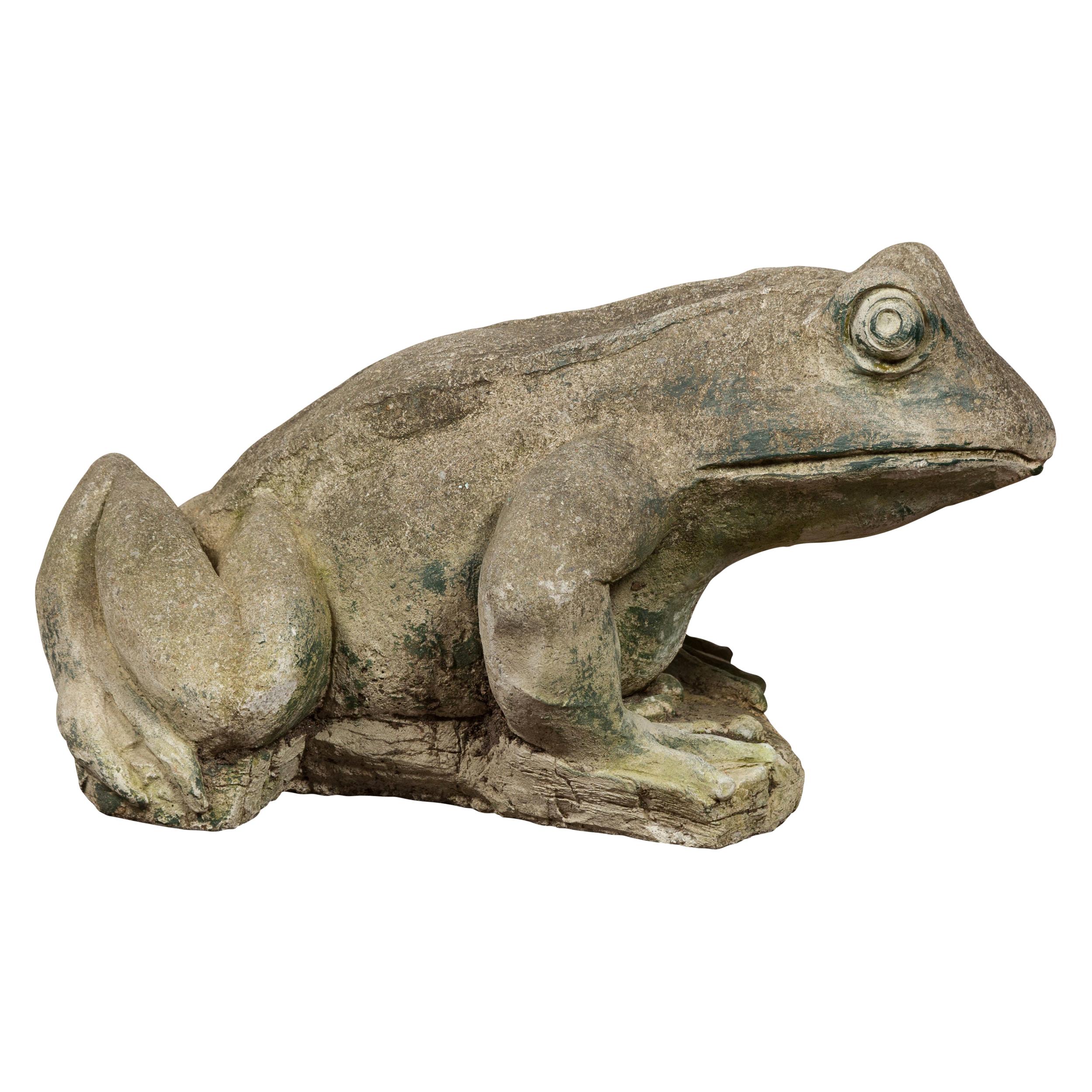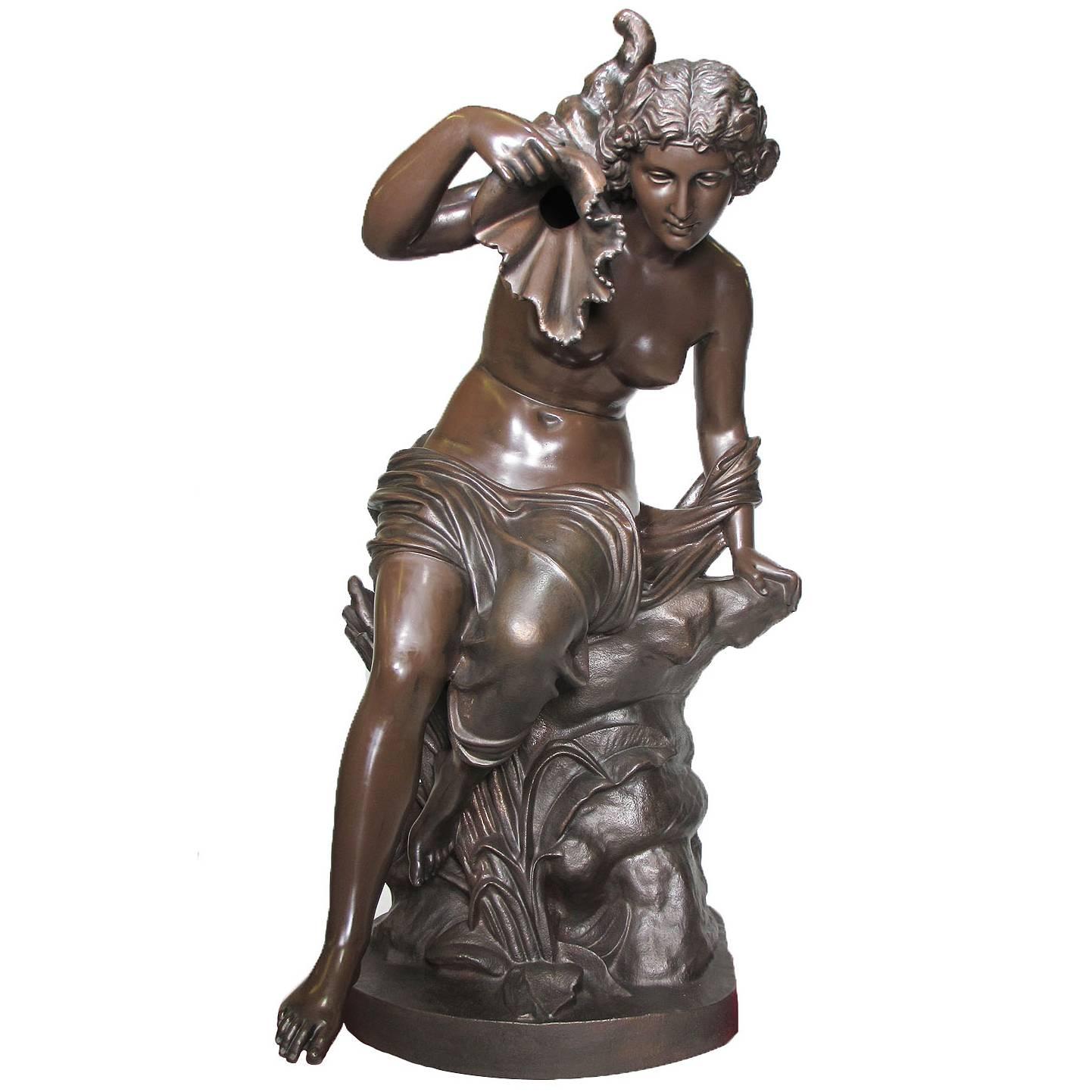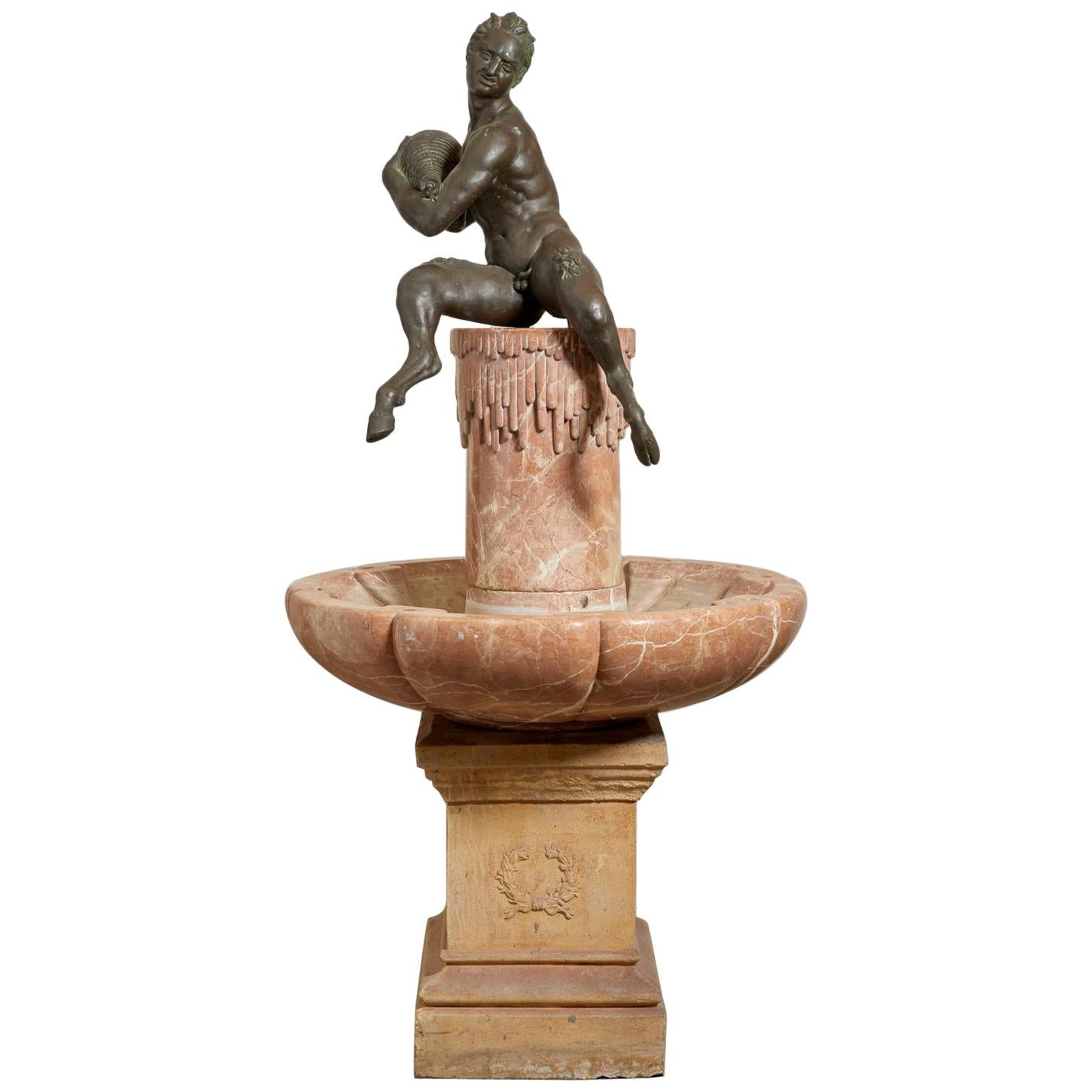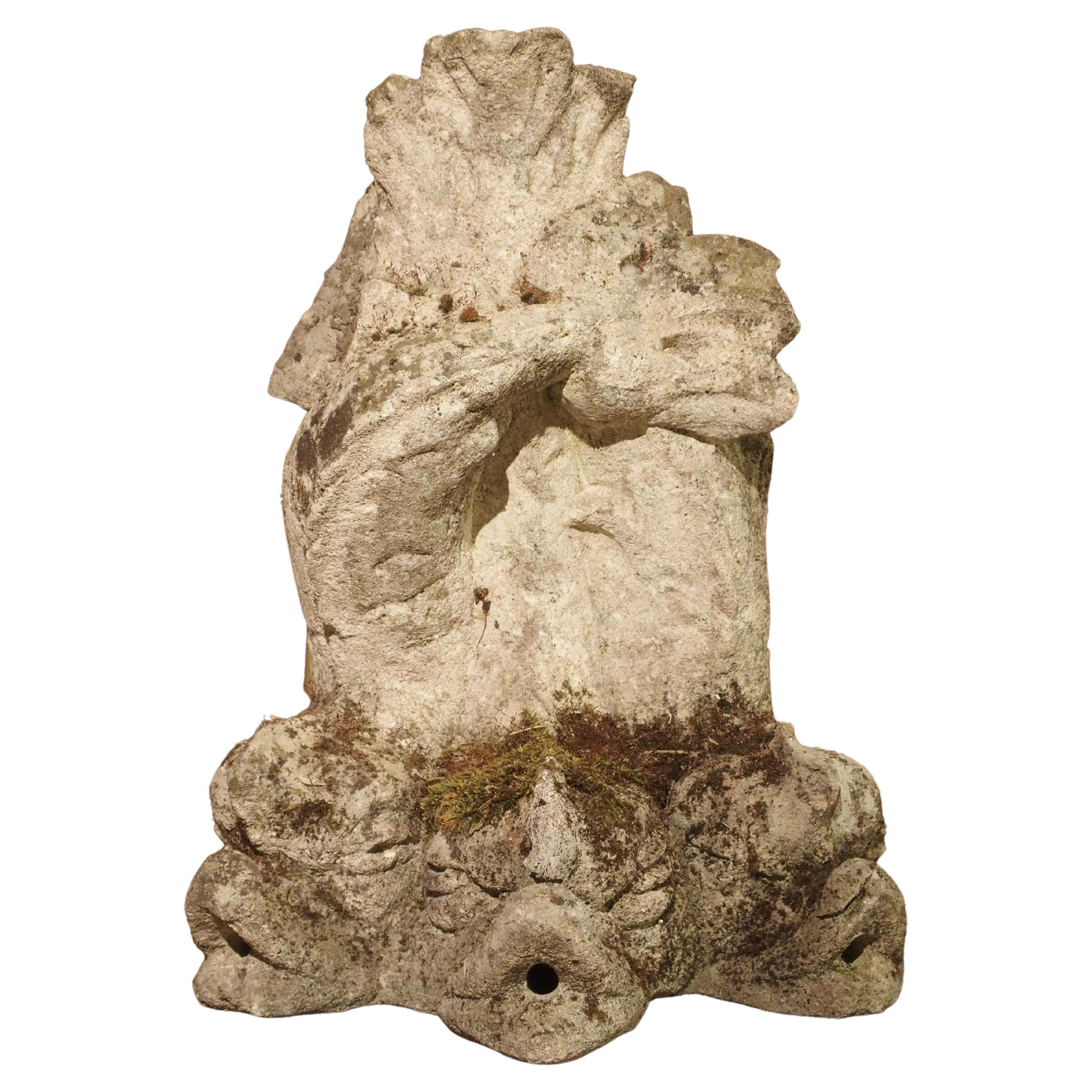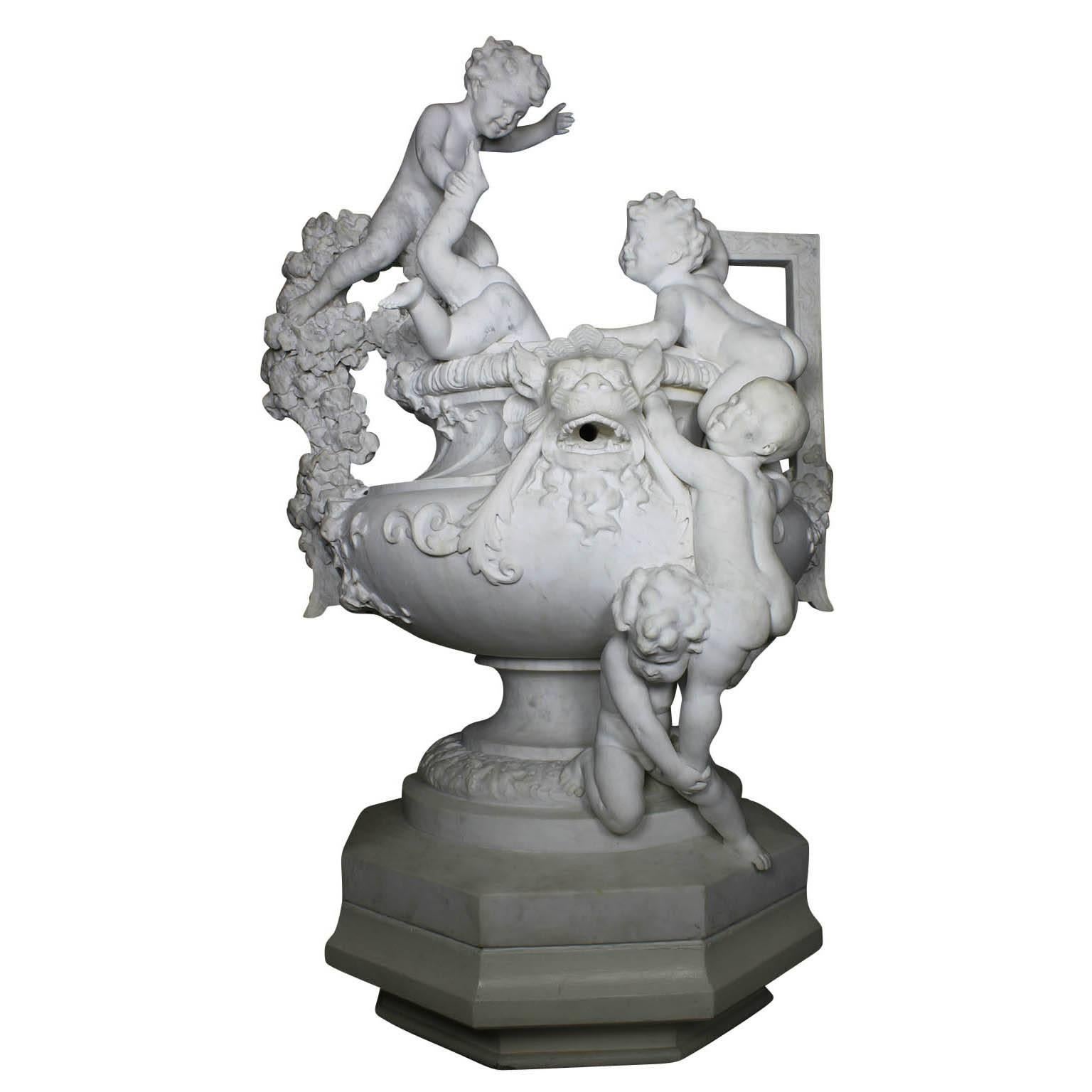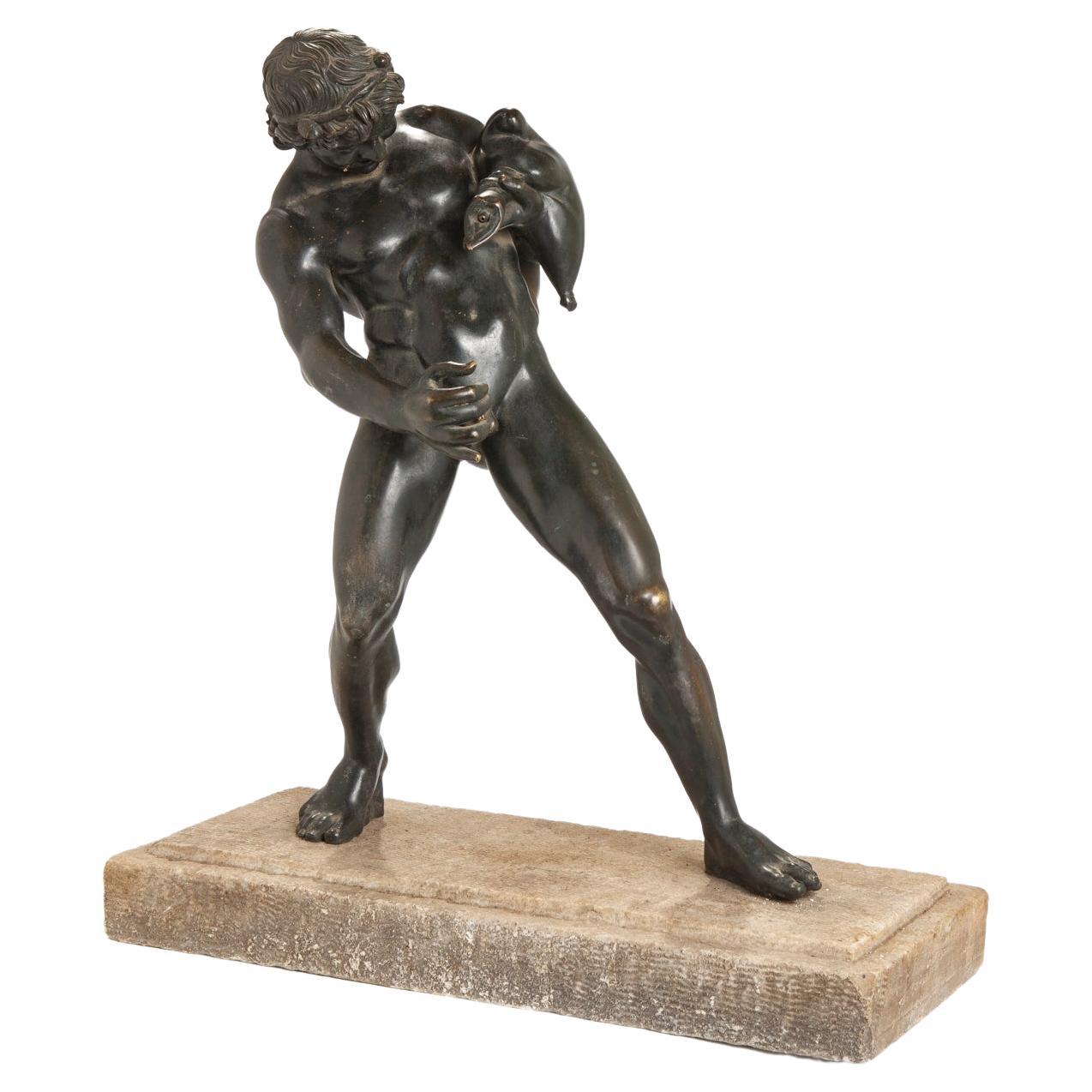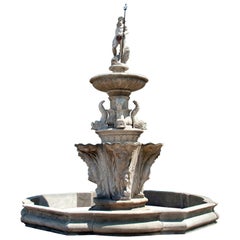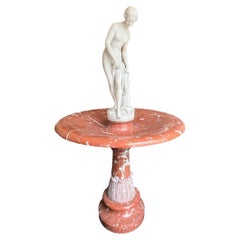
Exceptionally Large French Zinc Frog Fountain
View Similar Items
1 of 13
Exceptionally Large French Zinc Frog Fountain
About the Item
- Dimensions:Height: 19 in (48.26 cm)Width: 23 in (58.42 cm)Depth: 16 in (40.64 cm)
- Materials and Techniques:
- Place of Origin:
- Period:
- Date of Manufacture:20th Century
- Condition:Wear consistent with age and use.
- Seller Location:Mt. Kisco, NY
- Reference Number:Seller: ANM 0801stDibs: f83201710318942003fs
You May Also Like
- American Giant Stone Frog with Patina, Originally Used as a FountainLocated in Atlanta, GAAn American giant stone frog from the 20th century, with great patina. Made in the USA in 1987, this giant stone stone frog used to be a fountain (notice the remnants of a pipe below...Category
Vintage 1980s American Animal Sculptures
MaterialsStone
- 19th Century Large Circular Garden Fountain Neptune, Italian Limestone FountainLocated in West Palm Beach, FLMonumental antique Italian three-tiered garden fountain. Four Cariatidi surround the center base raising the water which spells from the waved shells. The second tier is supported by...Category
Antique Early 19th Century Italian Baroque Fountains
MaterialsLimestone
- Fountain in Marble, Year: 1920, FranceLocated in Ciudad Autónoma Buenos Aires, CFountain: Marble Roso Verona Rosso Francia marble, also known as Rouge incarnat or Languedoc, is a historical French marble used since the 19th century for churches and noble palace...Category
Vintage 1920s Italian Art Deco Figurative Sculptures
MaterialsMarble
- Large Bronze Figurative Sculptural Fountain by CanpiolaLocated in London, GBLarge bronze figurative sculptural fountain by Canpiola Italian, c. 1910 Measures: Height 130cm, width 67cm, depth 54cm This impressive bronze fountain is finished with a beauti...Category
Early 20th Century Italian Animal Sculptures
MaterialsBronze
- Large Patinated Bronze Fountain with Heron SculpturesLocated in London, GBThis wonderful patinated bronze work is designed to function as both a water fountain and a superb piece of sculpture. The item will be well-suited to either an indoor or outdoor setting. The piece takes the form of two herons...Category
20th Century French Anglo-Japanese Fountains
MaterialsBronze
- Large French 19th Century Cast-Iron Fountain Figure of a Seated Nude MaidenBy J.J. Ducel Me de Forges 1Located in Los Angeles, CAA Fine and Large French 19th Century Cast-Iron Fountain Figure Modeled as a Nude Maiden Seated on a Rocky Outcrop Holding a Cornucopia in Her Raised Right Hand, by J.J Ducel. Cast-Signed "J.J. DUCEL Me de FORGES, PARIS". Circa: Paris, 1880. A retailer of fine cast-iron ornaments, J. J. Ducel was recorded as supplying cast-iron works through Paris as early as 1810 in the Pas-de-Calais. The factory was sold in 1878 to the Fonderie de la Haute-Marne and all of the firm's models were subsequently bought by the Val d'Osne foundry. However, prior to the firm's sale, critics at the 1867 Paris Exposition Universelle proclaimed that "Ducel is the great manufacturer of works in cast-iron, to whom Paris is so largely indebted for the grace and elegance that supply so many of the adornments of its streets". Ducel, Val d'Osne and other associated foundries produced both bronze and cast-iron statuary. Cast-iron is corrosive, whereas non-ferrous bronze does not suffer the same detrimental effects of weathering and is therefore a superior and more expensive material. Height: 51 1/2 inches (130.8 cm) Width: 22 inches (55.9 cm) Depth: 30 inches (76.2 cm) The foundry of Val d'Osne became highly regarded for the varied nature and quality of its castings in the second half of the 19th century. Commonly known after 1870 as simply Val D'Osne, the company was originally founded by J.P.V. André in Val d'Osne 1835 and developed rapidly, absorbing smaller foundries in the Haute-Marne area east of Paris. The foundry contributed to the London International Exhibition of 1851, where a bronze fountain cast with classical figures attracted much attention. André also specialised in fancy castings and architectural fittings. His Paris adress was at 14 Rue Neuve, Menilmontant. In 1855 the Barbezat & Cie Foundry was born out of the André workshop. In 1867 Barbezat & Cie changed its name to Houille & Cie. Then, in 1870, it changed its name to Société Anonyme du Val d'Osne. With the change of name came the change of casting mark and adress: Fonderies d'Art du Val d'Osne, 58 Bd Voltaire, Paris or simply Val d'Osne. Cast-iron had been in production during the 18th century but its inferior status to the more fashionable and delicate wrought-iron had generally confined its use to architectural work. By the early 19th century, however, rapid developments of the Industrial Revolution combined with the simultaneous burgeoning of a new middle class provided the impetus for a dramatic expansion in its application and in a short space of time a proliferation of iron foundries across Europe and America thrived on the production of everything from inkstands to railway stations. The use of cast-iron for garden ornament became particularly widespread at this time, as the possibilities for its mass-production at a fraction of the cost of bronze made it the material of choice for indoor/outdoor statuary...Category
Antique 19th Century French Classical Greek Figurative Sculptures
MaterialsIron
$24,850 Sale Price44% Off
Recently Viewed
View AllMore Ways To Browse
French Zinc Fountain
Antique Wellheads
Concrete Sink Antique
Fountain Mask Antique
Antique Bronze Faucet
Bacchus Wall Fountain
Copper Wash Basin
Marble Fountain Mask
Reclaimed Trough
French Pewter Lavabo
Garden Fountain Medallions
Antique Basin Faucet
Antique Drill Bit Set
Antique Water Faucet
Bronze Crane Fountain
Heron Fountain
Lavabo On Stand
Marble Pool Surround
